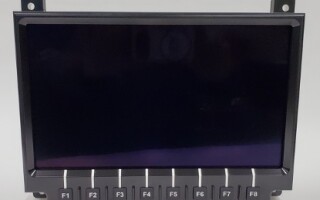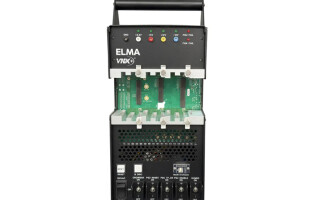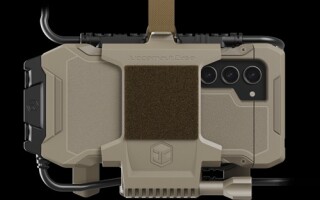Expanding radar signal processing market and our expanding coverage
StoryJanuary 26, 2015
Editorial Director John McHale discusses the January Radar issue and Military Embedded Systems' recent and upcoming projects.
Welcome to our 2015 Radar Issue. Once again we have started off the year with an issue focused on radar because embedded signal processing solutions are what drives the bandwidth in modern military radar systems and electronic warfare designs – two of the hottest areas in the defense electronics market.
The market for radar is especially strong and looks to stay that way. For example, for the radar/lidar there were 79 awards in 2013 totaling $4 billion with Raytheon leading the way, says Brad Curran, senior industry analyst at Frost & Sullivan. Through September 2014 there were 41 awards totaling $2 billion, he adds. “2014 is skewed with Lockheed Martin winning the $914 million Space Fence contract in June. The big money for radar is still in missile defense, which is proliferating. Secondly, funding for F-35 radar and upgrades to radars for other fighter jets – that cannot afford the F-35 radar – will be steady.”
The Lockheed Martin Space Fence system, which graces this month’s cover, tracks space junk in orbit around the Earth. For more details see Sally Cole’s article on page 16.
Other big awards we covered on Mil-Embedded.com in 2014 included Northrop Grumman Corp’s win of the Marine Corps AN/TPS-80 Ground/Air Task Oriented Radar (G/ATOR) systems low-rate initial production (LRIP) contract valued at $207,291,682. G/ATOR is a ground-based multi-mission active electronically scanned array (AESA) radar. For more on AESA radar see the Industry Spotlight section on page 36 and the Special Report on page 22.
Earlier in 2014 Raytheon won a $235.5 million contract to provide Radar Digital Processor (RDP) kits for upgrading the Patriot Air and Missile Defense System for the U.S. and two other partner nations. The contract looks to improve target detection and identification, enhance surveillance, and support the PAC-3 MSE missile, according to Raytheon.
“On the maritime side there’s been a lot of radar contracts for applications such as surface ship self defense to deter incoming anti-ship missiles from potential adversaries in the Western Pacific,” Curran says. Raytheon continues to be the leader in this after having won the U.S. Navy’s Air and Missile Defense Radar (AMDR) contract – a next-generation defensive system for Arleigh Burke-class destroyers in 2013, he adds.
Since radar continues to be hot, we will be expanding our coverage and attention to the subject in 2015. First, this March we will be launching a new electronic newsletter called the Radar Tech Quarterly, coming to you four times a year of course. Content will include all the best latest radar-related articles, blogs, products, and news from the Mil-Embedded.com website.
On top of that we also will have a Radar E-Mag with the best print and online feature articles from Military Embedded Systems as well as content original to the e-mag.
Our third new product for 2015 is the monthly e-newsletter titled the McHale Report, where each month I gather the best coverage from Mil-Embedded.com such as blogs, top news, defense executive interviews, procurement roundtables, market updates, etc. Original to each issue of the McHale Report is the Executive Outlook interview, where I interview a top defense executive, and the COTS Confidential roundtable, which is an online roundtable with experts from the defense electronics industry – from major prime contractors to defense component suppliers.
Each COTS Confidential roundtable will explore topics important to the military embedded electronics market. This month we discussed the effect of the memo former U.S. Secretary of Defense William Perry issued in 1994 essentially directing all the Department of Defense to use commercial off-the-shelf (COTS) products wherever and whenever possible.
The first Executive Outlook was with Rob Smith, VP of C4ISR at Lockheed Martin Information Systems & Global Solutions, where he discussed the “insatiable need for ISR” in the defense community and how it should continue to grow.
To read these features and more check out the January McHale Report at bit.ly/1IJrTBV.
Online isn’t the only area where we are adding new content sections. This month Assistant Editor Amanda Harvey debuts her University Update column on page 44. In that space Amanda will explore the latest military electronics research and development happening in the world of academia. Her first piece talks about lidar development at the Georgia Tech Research Institute.
So please check out our new online and print coverage and let us know what you think.
Thanks for reading!
John McHale jmchale@opensystemsmedia.com





